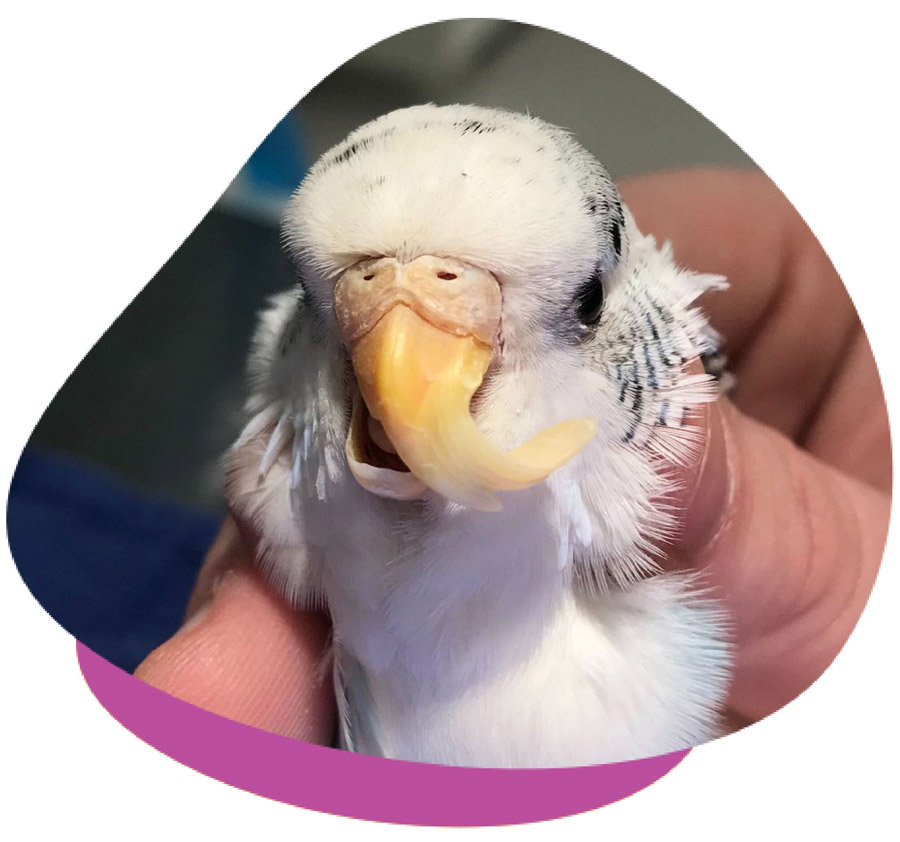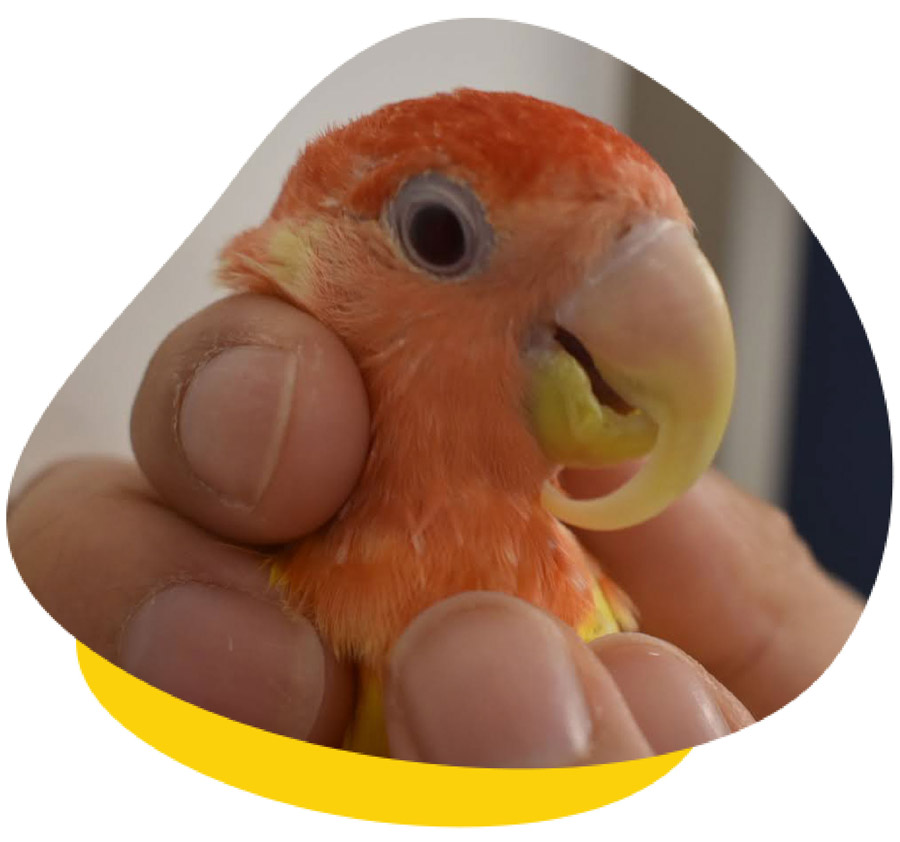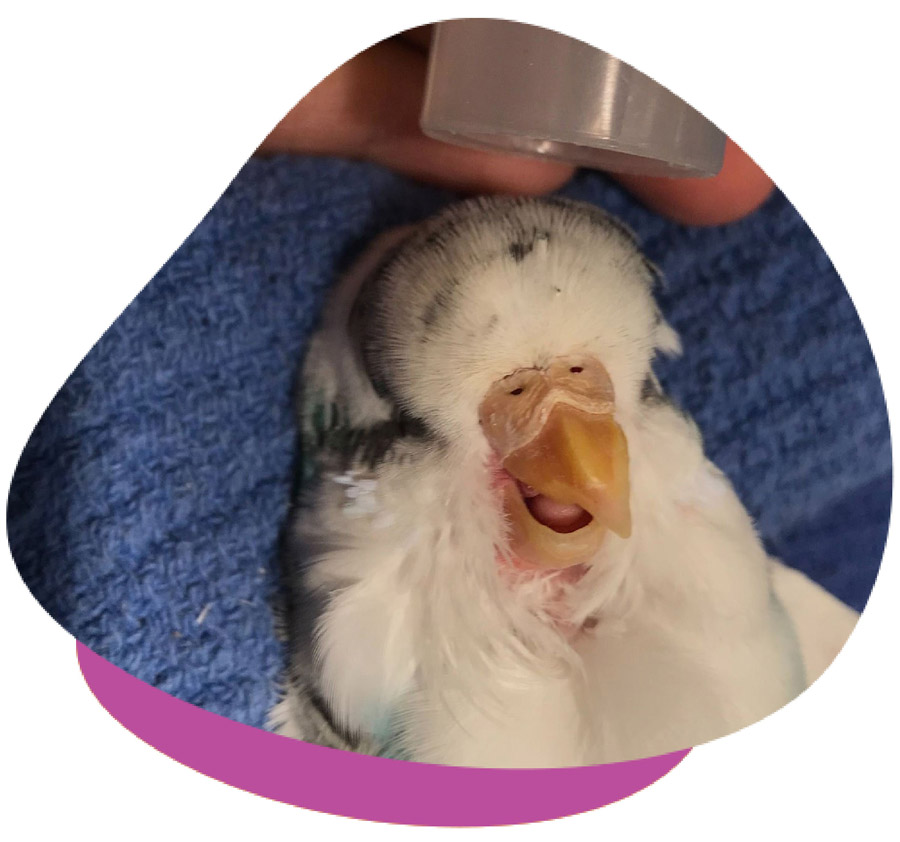Avian Beak Overgrowth
Beak overgrowth is fairly common in avian species. As the beak grows long, it can impair your bird’s ability to eat, groom and drink normally. A healthy bird wears their beak down and does not require routine beak trimming.
For birds with excessive beak growth, it is essential to identify the underlying disease process that is causing the improper wear of the beak. In many cases, systemic illness that leads to beak overgrowth can be treated with medical therapy, which removes the need for life-long beak trims.

Common Causes of Overgrown Beaks
There are few things that can cause a birds beak to become overgrown including:
- Chronic liver disease – often associated with a diet high in fat or cholesterol
- Scaly face mites (Cnemidocoptes) in budgies
- Lack of normal wear due to malformation – often because of trauma, or congenital malformation
- Lack of chewing opportunities or only being provided with soft foods
How Is the Cause Identified?
During your consultation, your bird vet will collect your bird’s history, specifically regarding previous injuries, diet, and general husbandry to assist in identifying the possible cause.
Further diagnostic testing is likely to be recommended. These tests might include blood testing, cytology or radiographs (x-rays), depending on your bird’s case. In some cases, beak malformation is repairable with surgery and we can discuss these options during your consultation.


How Is an Overgown Beak Corrected?
Depending on the results of this testing, your bird may be started on oral medications in conjunction with regular corrective beak trimming. These trimming procedures are normally needed every 6 – 8 weeks, and may require only one or two trimming procedures (if we are able to identify and correct the underlying disease process) or may be life-long (if the disease process is chronic and significant remodelling has already occurred).
We recommend that, alongside any treatment, your bird’s diet is evaluated and modified according to recommended feeding guidelines. We also suggest an inventory is taken of the enrichment and foraging options available to your bird, and, where possible, increased opportunity for normal beak use through foraging activities, destructive play or food treats (hard nuts, pinecones, destructive toys or perches etc).
This helps to ensure that your bird’s beak is being used for what it was designed to do, and the resulting flaking and shaping of the beak will mean less frequent vet visits and fewer corrective trimming procedures.
If you are worried or concerned about your bird’s beak, please don’t hesitate to get in touch.
